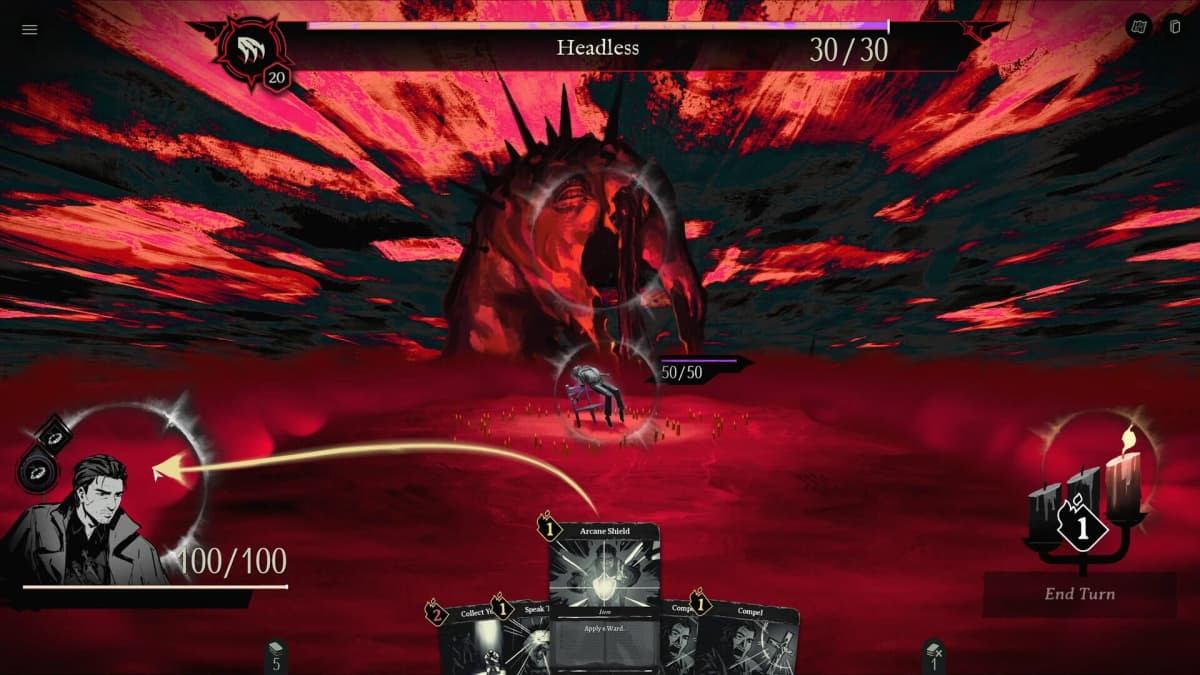
Game intel
Malys
Expose, endure and expel evil from innocents on your hunt through a corrupted city. As Noah, former priest turned demon-hunter, you'll perform exorcisms, forge…
It takes a lot these days for a roguelike deckbuilder to feel fresh. After endless “Slay the Spire but with X” pitches, I’d nearly tuned them all out—until Malys, the gothic horror card game from Dragon Age writer David Gaider, slipped into Early Access. Right away, its blend of narrative drive, tactical flair, and dripping atmosphere suggested this isn’t just another indie riff. Here’s a closer look at what makes Malys stand out, where it still stumbles in Early Access, and why horror and strategy fans should keep an eye on it.
Gaider’s pedigree shows: Malys feels less like a series of encounters and more like a dark novella you fight your way through. Instead of dry “enemy encounter” text, on-screen narration casts you as Noah, an exorcist chasing a grudge against the demon Malys herself. Every battle carries emotional weight—the prose in a ruined cathedral or a blood-soaked tenement doesn’t just describe the scene, it deepens your dread. I found myself bookmarking certain lines of dialogue, not because they unlock secret strategies, but because they actually matter to the story.
Most card games hand you mana or energy each turn and call it budget management. Malys swaps that for “candlelight,” a shared resource pool you generate by burning cards you might one day need. Early on, I resisted torching duplicate strike cards, hoping for combos—until I ran out of light in a boss fight and watched my options dwindle. That moment cemented a core lesson: sacrifice becomes part of your deck’s identity. Do you burn your defensive spells now to clear the next room, or hoard them and risk stumbling blind into a tougher fight?

Underneath that candlelight mechanic lie interactions I hope the developers expand. Right now you can pair a “bind” spell with a chained minion to trigger extra damage when a bound foe acts. It’s smart, it’s surprising, and it feels earned. Adding more cards that deliberately refund candlelight or interact with the burial pile would deepen the puzzle. As it stands, the foundation is solid—just hungry for fresh pieces.
From demon-haunted alleys to a decrepit asylum, Malys’s locations breathe life into the battles. The art style—ink-heavy linework drenched in crimson—leans into those gothic and neo-noir vibes. But visuals alone wouldn’t cut it without Gaider’s writing anchoring each place. In Lower Stacks, cryptic graffiti hints at local legends; in the Cathedral of Ash, hymns falter as dust chokes the pews. This environmental storytelling turns every room into a mini-stage, making the stale “go down a corridor, fight an encounter” loop feel alive.

Deckbuilders often tip too far into number-crunching; Malys strikes a better balance. When opponents suffer cursed statuses or bleed from ritual wounds, the card art and narration emphasize the horror of each effect. Meanwhile, managing candlelight and your dwindling health forces genuine tension—you can’t treat this like a rinse-and-repeat build. You’ll need to weigh narrative consequences (losing a helpful NPC early) against tactical gains (burning that NPC’s blessing to clear a boss). This interdependence of story and play is a rare treat.
As an Early Access offering priced at $9.99, Malys already delivers a distinctive spin on the genre. But for it to claim a spot alongside heavy hitters like Slay the Spire or Balatro, the dev team should:

If those updates arrive, Malys could become your go-to for gothic horror card battles, not just a niche curiosity.
Get access to exclusive strategies, hidden tips, and pro-level insights that we don't share publicly.
Ultimate Gaming Strategy Guide + Weekly Pro Tips